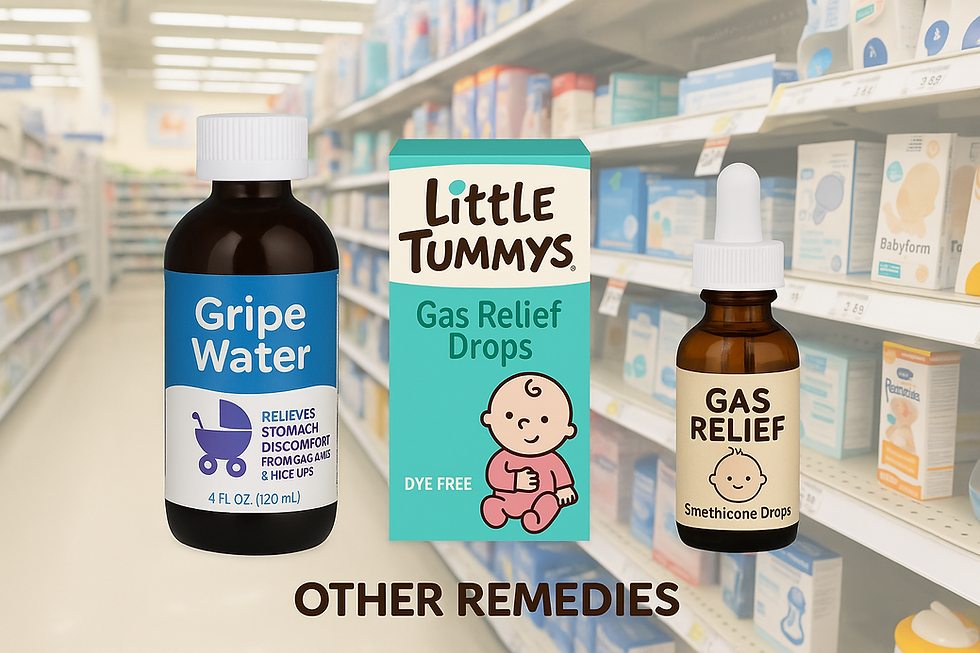Common Digestive Problems (That Aren’t Emergencies)
- Colleen Mckay
- Jul 31
- 2 min read
Most digestive issues in the first few months are uncomfortable but not dangerous. Here’s what parents commonly worry about—and why many of these signs don’t need a pediatric panic call (yet).
Gassiness is the most searched baby symptom—and for good reason. Tiny tummies fill with air fast, especially if:
Baby swallows air while feeding or crying
They're using a nipple that flows too fast or too slow
Their gut is adjusting to new proteins or milk types
Bottle Tip: Nipple Size Matters
Not all bottle nipples are created equal—and using the wrong size can contribute to gas, reflux, or even overfeeding.
Age/Stage | Flow Rate | When to Use |
Preemie/Newborn | Extra Slow (Size 0 or 1) | For newborns or preemies with weaker sucking reflexes |
1–3 months | Slow (Size 1–2) | Most common for young babies; helps prevent gulping and gas |
3–6+ months | Medium (Size 2–3) | For older babies or when feedings are taking too long |
6+ months | Fast (Size 3–4) | For babies with strong suck reflexes and thicker feeds |
Pro tip: If baby is coughing, gulping, or leaking milk while feeding, the flow might be too fast. If they’re falling asleep at the bottle or sucking forever, it might be too slow.
Spit-Up vs. Reflux: What’s the Difference?
All babies spit up—it’s a badge of babyhood. But here’s how to tell when it’s normal vs. when reflux might be more than just a laundry problem:
Normal spit-up:
Happens right after feeds, especially with movement
Doesn’t seem to bother baby
Baby continues to gain weight and thrive
Possible reflux signs:
Arching or crying during/after feeds
Frequent hiccups or gagging
Poor weight gain or feeding refusal
Still, even mild reflux is incredibly common—and usually resolves on its own by 12 months.



Comments